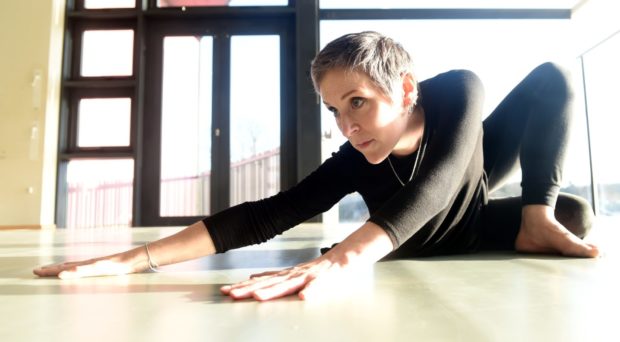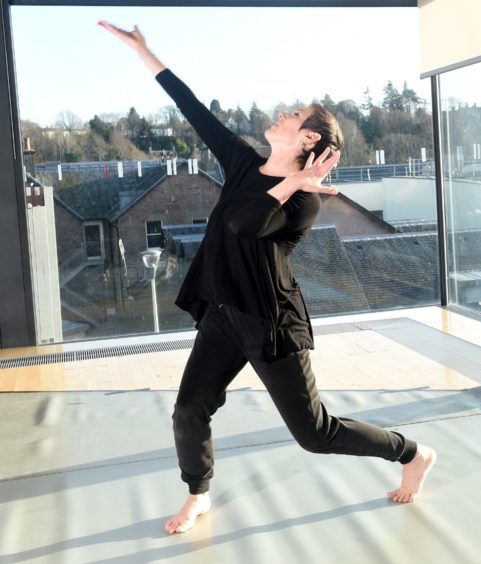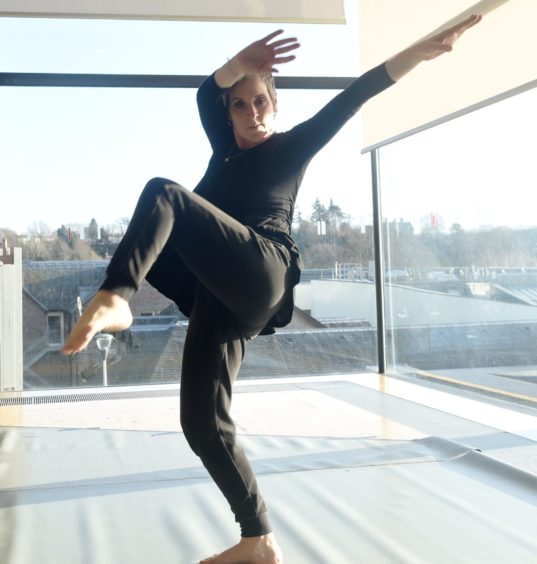“Dance for the sake of dancing.”
Not to get fitter, improve co-ordination or technique, but for the pure joy of dance itself.
To be at one with the music and leave your worries behind – if only for a few minutes.
This is the passionate call of Louise Marshall, who fell in love with dancing when she was just five years old.
Following a freelance dance career, Louise now leads the way as producer for dance and accessible arts projects at Eden Court in Inverness.
Her enthusiasm has not dulled with the passing decades, and she is now involved with a humbling initiative.
Dance for Parkinson’s enables people living with the incurable neurological disease to find freedom through the movement of dance, with a weekly class on offer.
The project is a collaboration between Scottish Ballet and Dance Base, and has been running in the Highland capital for roughly two years.
Louise, who is lead tutor for the group, has no qualms about admitting that ballet really isn’t her forte though.
“I’ve always been a contemporary dancer, and we don’t do ballet in the class,” she says.
A new term is now under way, with around eight people who regularly attend the group.
People also drop in on a more sporadic basis, including a member who hails from the islands.
“I am defiantly not a ballet teacher, although historically, Dance for Parkinson’s has been held by ballet companies,” says Louise.
“The sessions aren’t run like a regular dance class either, I don’t stand at the front and expect people to perform all these moves.
“It’s much more informal.
“Although this class is for people living with Parkinson’s, the aim is to leave Parkinson’s at the door.
“We don’t discuss it during the session, but we do certain moves to try and benefit people.
“Parkinson’s leads to a decrease in dopamine, which impacts on movement and emotions.
“So we do a lot of dopamine-boosting exercises, structured around imagery.
“We start the session sitting down, and I sit amongst the dancers.
“By the time we’ve finished, hopefully people will be on their feet.”
Louise aims to put together exercises which enable everyone to take part, regardless of ability.
It is one of the few classes where a live musician is also on offer.
“We never want someone to feel that they can’t do anything during the sessions,” says Louise.
“Of course there are benefits for balance and muscular strength.
“But I wouldn’t point that out during class, as it’s a chance to forget about Parkinson’s.
“If you can dance for the sake of dancing, for the love of it, because dance is art, you’ll get the benefits just the same, as well as enjoying yourself.”
The sessions can be a rollercoaster of emotions, both for Louise and the dancers.
Parkinson’s is a progressive disease, meaning it causes problems in the brain to grow worse overtime.
The number of people diagnosed in the UK is around 145,000, and although there is no cure, there is a variety of treatments, therapies and support available.
Symptoms include tremors, slowness of movement and rigidity in the muscles.
“I think dancing can help people to feel relaxed and that bit more free, but especially in the case of those living with Parkinson’s,” says Louise.
“Dance is a form of emotional expression, and people often leave the session on a high.
“I find the class incredibly rewarding because people tell me how much they enjoy it.
“They come away feeling happier.
“Of course, there is the other side of things.
“Parkinson’s is progressive, meaning I can see someone may not be achieving what they did a few weeks or months ago.
“That can be really hard, but I focus on the fact that people keep coming back.
“We don’t have as many dancers as, say, a class in the central belt.
“That’s because Inverness is far more geographically diverse.
“One gentleman always tries to pop in when he’s visiting from the islands, and the dancers always leave such lovely comments in a book.
“We’ll never tear someone apart for their technique.
“I believe that anyone can dance.
“No child is born without the ability to move to music.
“There is no right or wrong way to dance, there is a style for everyone.”


